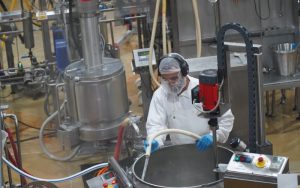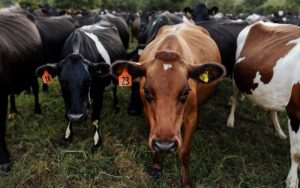
Increasingly put off by highly processed plant-based products, the US is displaying a keen appetite for dairy protein.
United States consumers have discovered the wonders of dairy protein.
Elisa Giusti, Fonterra’s vice-president of marketing, strategy and innovation for Fonterra Global Ingredients, said food fortified with dairy protein is increasingly seen as a crucial element in people’s health and wellbeing.
It is a trend she said is being reflected in new products and new uses.
Chicago-based Giusti said it is part of a movement to natural products – away from plant-based proteins and margarine to dairy products such as butter, natural cheeses and fats.
Fortified protein is being used in new beverages, baked goods, snacks and pasta and even potato chips and candy bars.
“Americans understand that protein is good for them,” she said.
“There are hundreds of ways that milk products find their way onto shelves.”
She said consumers have lost interest in plant-based alternatives as awareness of health and wellbeing has increased.
They are asking themselves which is better for them, a natural dairy product or a plant-based alternative that has a lengthy, complex ingredient panel.
“Natural grass-fed dairy, they see that as real food and real food is better for me.
“They have a better understanding of the nutrient reality of dairy.”
Trends come and go but Giusti can see only upside in interest in fortified dairy protein as consumers make this shift using their own research but also encouraged by influencers who pique their curiosity.
At the heart of this shift is the perception that if it is good for the planet, it must good for the consumer.

The global market for fortified protein is expected to grow by US$10 billion ($16bn) in the next four years and is one of reasons Fonterra is investing $75m expanding its Studholme plant in South Canterbury.
Giusti said her role is to connect dairy with users and applications, and increasingly those consumers want proof those products were sustainably produced.
Consistently the top four considerations are environment, climate change, animal welfare and regenerative agriculture.
“Targets were one step, now it’s action. They want us to show them the progress.
“It’s gone beyond the ‘we would like you to’ to ‘this is what we expect you to do’.”
New Zealand dairy is acknowledged as being world leading in sustainability and is seen as providing customers with carbon-reduction solutions.
But farmers cannot afford to relax.
“So long as we continue to commit to being leaders in sustainability – which we are and all credit to farmers – it gives the co-operative the ability to differentiate, it’s a value proposition.”
For Giusti, who was raised in Chicago and who has worked for over a decade in the commercial food industry, working for a dairy co-operative differs from her previous roles.
“It gives me a sense of purpose and obligation to the thousands of farmers who get up every day to feed and nurture the world.”
More: Wallace is visiting seven countries in six weeks to report on market sentiment, a trip made possible with grants from Fonterra, Silver Fern Farms, Alliance, Beef + Lamb NZ, NZ Meat Industry Association and Rabobank. Read more about his findings here.
You can now read the most important #news on #eDairyNews #Whatsapp channels!!!
🇺🇸 eDairy News INGLÊS: https://whatsapp.com/channel/0029VaKsjzGDTkJyIN6hcP1K
























